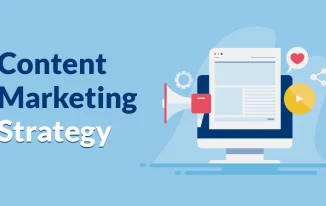Marketers working in the financial industry likely know it is hard to stand out. However, financial services marketing is all about attracting new clients. Understanding the basics will help you grow your financial institution.
Major Types of Financial Institutions
The process involves ensuring others are aware of the financial products you offer, and the goal is to convert leads into clients. Many techniques can be used for the process, including advertisements, blogs, print, or radio. Many marketers choose to use a mix of digital and traditional strategies, but digital strategies are growing quickly.
It is important to not rely too heavily on any one type of marketing until you have determined what the most effective method is for your company. By understanding what each method looks to achieve, you can successfully implement the best ones.
In any type of financial services marketing, it’s important to help your clients be financially literate. It involves skills such as investing, budgeting, and personal financial management.
When it comes to the stock market, it’s critical to have sufficient financial literacy to navigate things. For example, someone who is planning on investing in the stock market might consider a swing trading system, which involves buying at market lows and selling at highs.
Why Do Financial Institutions Need Marketing?
Financial institutions used to be able to sit back and wait for customers to come to them. However, because of new technology and increased competition, it is important for these companies to turn to digital marketing.
It is important to reach every customer possible, and there are many regulations in the industry, making things even more complicated. Creating a strong plan will ensure success.
Effective Financial Services Marketing Techniques
Understanding the best way to reach potential customers is one of the biggest challenges of creating any marketing plan. Today’s institutions can no longer focus solely on products.
They need to put customers first and show how their products can help customers. It is important to meet clients where they are and not wait for them to come to you. By staying focused on the customers, you can grow your business.
Build Trust with Your Prospective Customers
People don’t want to do business with an institution that they do not trust, which is why it is so important to build a rapport with potential clients.
Consider personalizing your offerings to make people more likely to choose your products. Look into targeting marketing to reach every segment of the market.
Tell your clients that you care about them and that you want to help meet their needs. Finance is personal, so you need to ensure you are adding a personal touch. When you let them know you care about them and want to meet their needs, they will be more willing to trust you when it comes to their money.
You can also build trust with clients by using your existing customer base. Ask them to refer new clients and leave positive reviews, which lets you show potential new customers that you are a trustworthy company.
Have current customers leave reviews wherever possible, including search engines, the company site, and social media.
One way of building trust is to make your brand more human. That includes engaging with customers to show them there are people who care behind your brand. Show that you care about the same things your target audience does.
Many times, marketing focuses on getting conversions, but consider starting conversations instead. By having conversations with your potential customers, you can build a community and achieve commercial success. That helps you differentiate your brand and stand out from the crowd.
Relate To Your Target Audience
Besides ensuring you are a trusted company; you also need to be relatable. Ensure your tone, branding, and message resonate with those you want to attract.
Whether you are choosing a very specific audience or wish to reach a large audience, you need to relate to the people and use the outlets they are already using. Understand what they want to hear and speak their language.
While you will likely reach potential clients on a range of websites, it is important to ensure all touchpoints offer a consistent experience. You can use header images, logos, and profile pictures with similar designs and themes to ensure consistency.
When someone interacts with the brand, no matter the channel, they should get a familiar, consistent experience. That will help you reinforce your brand image and create more trust.
Messaging is another thing you should keep consistent, no matter the channel. Create a core process to manage messaging so each interaction remains professional and consistent.
Experiment With Influencers
Many customers do not want to hear what financial institutions have to say, which is why you will want to turn to other methods of having your voice heard. Consider turning to influencers to say your message for you.
Many times, younger people do not feel that financial institutions understand what they need. Consider meeting them on social media and having influencers promote your brand. It is also a great way of building trust.
Use Content to Educate Customers About Their Financial Wellbeing
People are always learning, so they are always turning to new content when they want to educate themselves on a certain topic. If you can be the one creating that educational content, you can bring more traffic to your website.
That will help build brand awareness and create conversations with your customers. Engaging with them is a great way to make a memorable impression. By teaching your audience, you can provide them with value and start building a relationship with them.
Everyone has sites they trust more than others, and if you can be that trusted site people turn to, you can greatly improve your rankings in search engine results.
Conclusion
Marketing your bank can be a difficult process, but if you understand it and implement it effectively, you can create an effective growth strategy.
That way, you will acquire only the most relevant leads and spend your dollars where they matter the most. The result will be lifelong advocates and customers.





